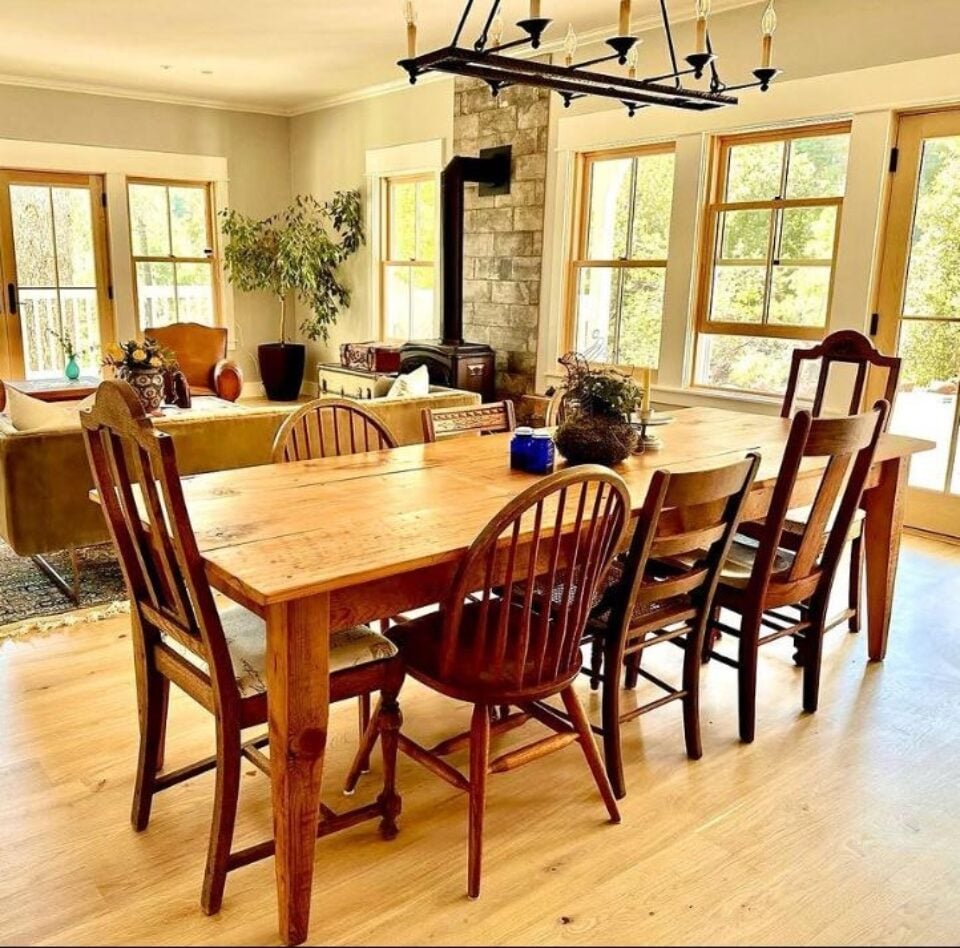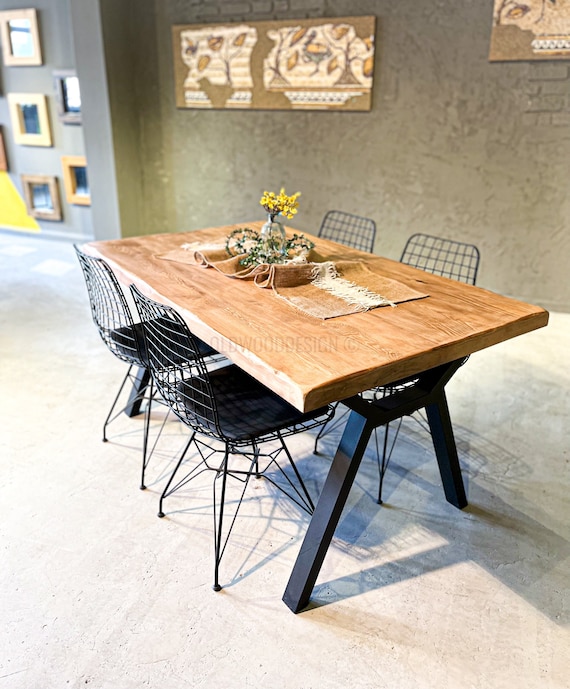Discover Durable and Trendy Dining Table Legs Wood for Every Home
Discover Durable and Trendy Dining Table Legs Wood for Every Home
Blog Article
What to Take Into Consideration When Choosing Eating Table Legs Timber for Your Home.
When selecting timber for dining table legs, numerous important variables necessitate cautious consideration to guarantee both functionality and visual allure. The kind of wood picked can considerably influence the table's durability, stability, and overall style, while the maintenance needs might impact long-term usability. Furthermore, the interplay of grain patterns and shade with existing furnishings can produce a natural layout. Understanding these elements is vital, yet many neglect the essential facet of financial restraints. As we discover these considerations further, the effects of your selections might reveal unforeseen obstacles and possibilities.

Value of Timber Type
When picking table legs, the choice of timber type plays a crucial role in identifying both looks and resilience. Various wood species supply varying levels of toughness, resistance, and weight to put on, which can substantially influence the capability and durability of the table. Woods such as oak, cherry, and maple are typically favored for their durable nature and capability to withstand daily use. These woods not just offer structural integrity yet likewise stand up to scrapes and damages better than softer alternatives.
Conversely, softer timbers like poplar or yearn, while more cost-effective, may not supply the very same degree of sturdiness and might require even more regular upkeep or replacement. The timber type also affects the table's ability to withstand environmental aspects such as moisture and temperature variations. Moreover, the selection of wood can affect the convenience of completing and tarnishing, which can be vital for accomplishing the wanted appearance.
Visual Considerations
The aesthetic appeal of table legs dramatically adds to the general visual of the dining space. Dining Table Legs Wood. When picking timber for dining table legs, the grain pattern, coating, and shade are critical aspects that can enhance or take away from the room's style. Different wood types display varying tones and appearances; as an example, oak offers a traditional look with famous grain, while walnut offers a rich, dark beauty
Furthermore, the shape of the legs plays an important function in defining the table's personality. Streamlined, minimal legs can create a contemporary feel, while more ornate, transformed legs evoke traditional beauty. The style of the legs ought to integrate with existing furniture and the total motif of the area, whether it be rustic, modern, or transitional.
It is additionally crucial to think about just how the legs engage with various other furnishings pieces, consisting of sideboards and chairs. A natural style not only raises the eating experience however also adds to the home's general aesthetic coherence. Eventually, the choice of table legs should be a thoughtful decision that reflects personal preference while ensuring aesthetic harmony within the area.

Durability and Security
Longevity and security are vital consider the choice of table legs, as they directly affect the long life and security of the furnishings. When selecting wood for dining table legs, one must consider the inherent residential properties of different wood kinds. Woods, such as cherry, oak, and maple, are typically liked for their strength why not try these out and resistance to use, making them ideal for high-traffic eating locations.
In addition to the kind of wood, the building and construction technique additionally plays a significant duty in the general stability of the table. Legs that are well created, either through traditional joinery techniques or modern engineering methods, will certainly offer improved assistance and prevent wobbling. It is necessary to examine the density and style of the legs; thicker legs are generally much more stable and can useful content stand up to greater weight.
Additionally, the environmental conditions in which the dining table will certainly be utilized can impact resilience. Wood that has actually been correctly dealt with for moisture resistance will certainly perform better in moist environments. Ultimately, selecting the ideal combination of long lasting wood and secure building and construction will certainly make sure that your eating table stays a risk-free and practical focal point in your house for several years ahead.
Maintenance Demands
Choosing eating table legs made from resilient wood is just the start; comprehending maintenance demands is similarly vital to preserve their appearance and performance. Different wood kinds require varying levels of care, so it is important to know what is required for your particular option.
Regular cleansing is basic; utilize a soft, damp cloth to remove dust and particles. Avoid severe chemicals that can harm the coating. For wood coatings like varnish or lacquer, regular brightening with furnishings wax can enhance sparkle and provide a safety layer against scrapes.
Preventative actions are essential (Dining Table Legs Wood). Usage coasters and placemats to stay clear of straight call with wet or hot items, which can warp or tarnish the timber. Additionally, think about placing felt pads under the legs to avoid scratches on your floor covering and decrease use on the timber
Moisture control is an additional considerable element; maintaining a secure environment aids to stop bending and splitting. If your dining location my company is prone to changes in temperature level and wetness, take into consideration making use of a humidifier or dehumidifier as necessary.
Budget Plan and Expense Factors
When planning to buy dining table legs, comprehending spending plan and price variables is important to make an informed decision. The kind of timber picked for the legs dramatically affects the overall price.
Labor and craftsmanship likewise play a pivotal duty in the general cost. Handmade or artisan-crafted legs may lug a premium cost tag, reflecting the skill and time invested in their development. It's vital to assess the balance between high quality and price; investing more ahead of time can bring about a longer-lasting product that calls for much less maintenance gradually.
Conclusion
In recap, selecting the proper timber for dining table legs demands cautious factor to consider of various variables, consisting of timber type, visual allure, spending plan, longevity, and upkeep restraints. The selection of woods such as oak and maple can boost both strength and aesthetic allure, while softer woods may be a lot more economical but less enduring. Ultimately, a well-informed choice regarding product selection will certainly add to the overall functionality and longevity of the table, making certain an important financial investment for the home.
When choosing wood for eating table legs, numerous important factors call for careful factor to consider to ensure both performance and visual appeal.When selecting eating table legs, the option of timber kind plays an important duty in establishing both looks and toughness. When choosing timber for eating table legs, the grain shade, pattern, and finish are pivotal elements that can improve or detract from the space's layout. When picking wood for eating table legs, one need to take into consideration the intrinsic residential or commercial properties of various wood kinds.In recap, picking the ideal wood for dining table legs requires cautious consideration of numerous aspects, consisting of wood type, aesthetic appeal, spending plan, sturdiness, and upkeep restrictions.
Report this page